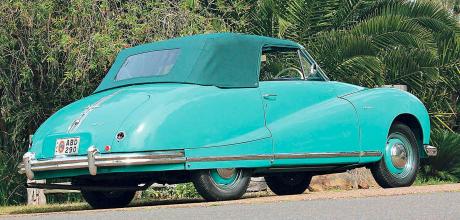1949 Austin A90 Atlantic prototype no.5
The Austin A90 Atlantic prototype no.5 was shipped to Australia in 1949 to fill a gaping hole at the Melbourne International Motor Show. Seven decades on, it is still there and looks better than ever.
WORDS AND PICTURES: CRAIG WATSON
AUSTIN A90 ATLANTIC PROTOTYPE NUMBER FIVE
A prototype that should never have been in Australia but beat the odds.
READERS' CARS 1949 Austin A90 Atlantic prototype no.5
Back in the 1940s, a motor exhibition was an integral part of Sydney's Royal Easter Show, with most manufacturers displaying in or around the Hordern Pavilion and Royal Hall of Industries. The Truth newspaper had a fullpage preview of the motoring exhibition in its issue of 10th April 1948, which listed the Austin Sheerline saloon and A90 Atlantic convertible on the Larke Hoskins stand, while the Larke, Neave and Carter stand was displaying the new Rover 75 and the Land Rover.
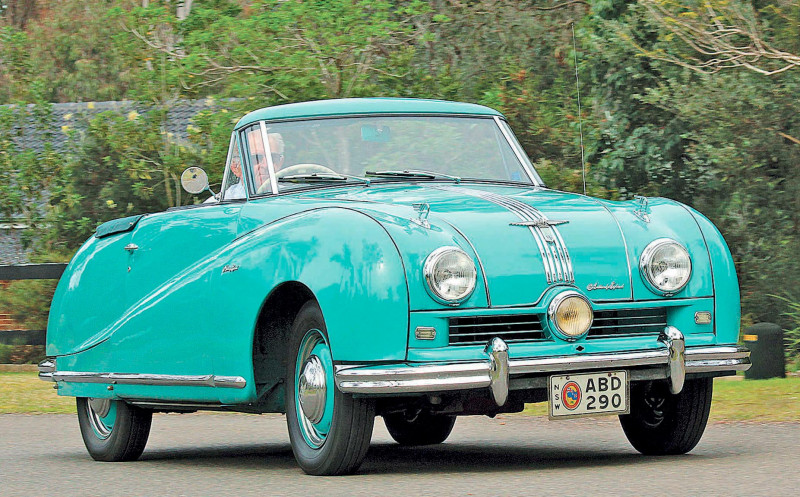
An unnamed reporter for The Sun newspaper test-drove the A90 and reported: 'Taking the Austin for a run on Sydney streets shows the outstanding performance of this sports convertible, and the vivid ensign-red bodywork and bright beige upholstery attracted attention wherever it went.' He was clearly impressed with the car, continuing: 'It is quite a thrill to hold the wheel and note the extreme ease in placing the car accurately on either straight or curving roads, to feel the eager response of the accelerator, and know the reserve of power available from the four-cylinder overhead valve engine with its twin SU carburettors.'
He obviously wasn’t the only one impressed with the car, as it was sold at some point during the show. The story told is that the salesman was excited to have sold the first A90 in Australia, only to be reprimanded by his boss as there was now no demonstrator car available for the Melbourne International Motor Show – arguably the most important motor show in the country – in only a month’s time. The purchaser was apparently asked if he would mind waiting for another car to arrive from England – a delay probably of many weeks at least – but he insisted on taking the car at the end of the show.
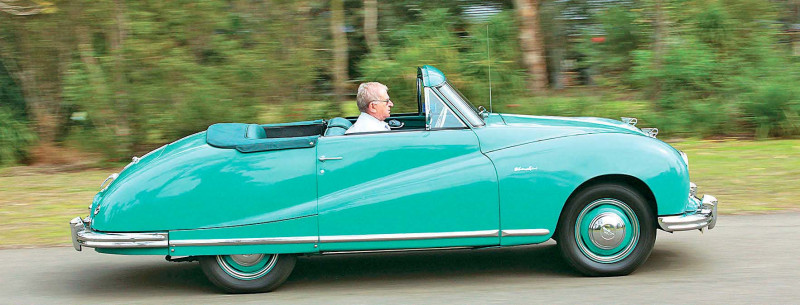
A telegram was sent to Austin in the UK, asking if they could provide another car urgently for the Melbourne Show. It would seem that, with production having only got under way a few months previously and the bulk of production being targeted for the US and thus LHD, there were no RHD cars immediately available. A search was carried out and prototype number five, chassis 35505, was cleaned up, loaded on a Bristol Freighter and flown to Australia, probably straight to Melbourne.
Australian Lifeline
So, arriving in time, this prototype car was the centrepiece of the Austin stand at the Melbourne International Motor Show. It proved a popular attraction, with much interest shown from the press and public alike. In fact, Australia threw Austin a lifeline for the A90, taking to the car better than any other market. The positive reaction to the car from the press was one factor. Typical of the response, and probably just repeating an Austin press release, was the Armidale Express, which said: 'Stamina and beauty make the A-90 Atlantic convertible model a modern car of outstanding merit and appeal… Styling is bold and unusual, but the streamlining is sound and practical, providing little wind resistance. Steering is high geared and very accurate directionally, with the result that no particular attention is called for in keeping the car straight, whilst corners can be taken safely at speed.'
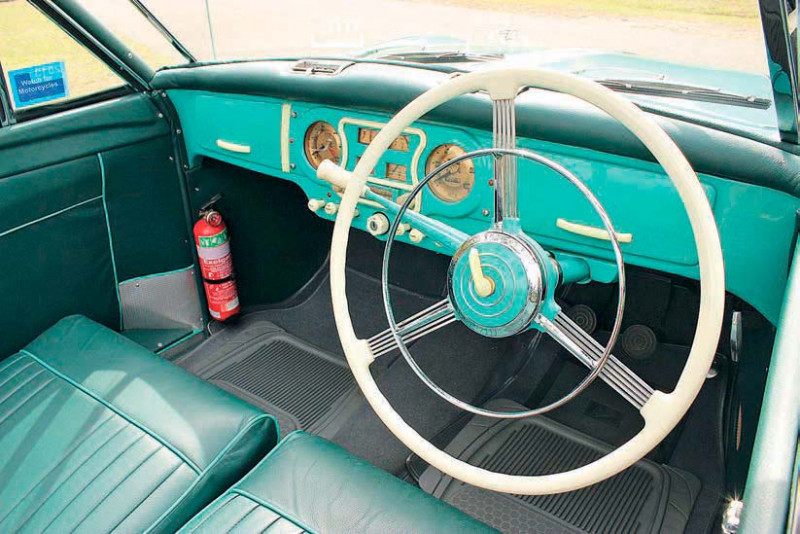
By the time production had ceased in 1952, some 821 had been sold in Australia. That still doesn’t sound like many, but it wasn’t far behind the MG TD which, over roughly the same period, saw 904 examples sold in Australia. To put that into perspective, 73% of all TDs made were sold in the US, with only 3% sold in Australia. For the A90 Atlantic, only 4% were sold in the US, but 10% of the total (or 23% of all exports) were sold in Australia.
Private Ownership
As a prototype vehicle, the car shown in Melbourne should have been sent back to the UK afterwards. Perhaps it was deemed unnecessary or too costly, or maybe an opportunity to sell the car was too good to refuse. Whatever the case, it was bought by a Melbourne businessman (possibly GJ Coles, the proprietor of Melbourne’s most successful retail store chain, though that can't be confirmed) during or after the Melbourne show.
In 1951 it was bought by a farmer, Graham from Avenel in northern Victoria. Graham used the car as his daily driver, including for occasional work on the farm. However, according to the current owner of the car, Peter Hackney, trouble struck Graham about a year after buying the Austin. 'One day, returning home late in the afternoon and rounding a bend on a local dirt road, a Kangaroo impacted the right headlight,' he told us. 'The instinctive action of swerving to the left resulted in the car spinning around and collecting a white post with the right rear corner.
'The car was still able to be driven, and in due course was presented to the local repairers to have the necessary work carried out. With the car ready to paint, he was told that Austin in Melbourne could not identify the colour, as it was not on any production lists they had access to. When asked what he would like them to do, he told the repairer to simply paint it blue.' However, the only paint they could use was enamel, as otherwise the lacquer-based paint of the day that had been used by Austin in the UK would require a complete stripping back to metal. They said that with enamel, they could block back the existing greenish colour using a fine paper, then overspray it with the enamel. Exit a greenish car, enter a blue car, but that was not to be the last of the problems.
'In 1975, just after having the car serviced in Melbourne, when driving out on the Sydney Road back to Avenel the gearbox failed with just over 75,400 miles showing on the odometer. The car was taken back to the service department for an assessment of repairs. A few days later, a phone call advised that it was quite a different gearbox to that which they knew should be in an Atlantic. After many telex messages to the Longbridge factory, the dealership in Melbourne was able to confirm that chassis 35505 had a gearbox case housing gears like – but not the same as – those used in anAustin A40, and also the same clutch as an A40.
'The flywheel was also quite different, as the first motion shaft did not fit into the end of the crank like that of a production Atlantic, but in a special bearing housed in the flywheel. If repairs were required, they would need to do a total conversion to a standard A90 Atlantic box,' Peter explained. 'Graeme considered the price given to do this was too high, so he took the car home where he intended to do it himself. After all, the car was then 25 years old. Fortunately for me, that never occurred, but alas, the original box was taken for scrap metal. I do still have the flywheel, and can testify to this aspect of the story.'
In 1981 Peter had a chance meeting with Graham and got to see old Number 5 sitting in a shed on the farm. 'I said to him then if he ever wanted to sell it, could I have first refusal?,' Peter recalled. 'He said, yes, that’s not a problem. I’m not married; I’ve got no kids or anything.'
Peter remained friends with Graham and used to drop in at the farm whenever he drove to Melbourne. In 1997 Peter and his wife Jan went to England, and undertook a fact-finding mission at Gaydon. 'Whilst not owning the car at that time, I took its details with me. The then head archivist at the Heritage Trust, Anders Clausager, told me that they only held production records, and within those there were no details of chassis #35505. The earliest production car they had on record was chassis 35509.
'It was his view that the car was manufactured before production began, and that the additional non-standard items that it was fitted with, particularly the under-dash heavy metal pressing and the extra stiffening gussets used on the pillars, would indicate to him that it must have been one of the prototypes. Reflecting on the chassis number, it may well have been the last prototype, but such could not be a certainty. As Number 5 had the under-dash stiffener prior to the plating of its chassis, a final prototype may have been made to truly prove the fact that the scuttle vibration had been fixed, prior to beginning official production. That being the case, 35506 may have been the last prototype, or alternatively it may have become the first production unit.'
Number 5 is Alive
'Graham sent me a letter in 2000 saying he and his brother were selling the farm, and would I like to buy the car?' Peter continued. 'It was back here within 24 hours! I hired a trailer and went down with a mate and we loaded it about 8 o’clock that night, after pumping up all the tyres.' Peter said that when he got the car it was in poor condition but, apart from a small amount of surface rust, there was no serious rust or body damage. 'But there was dirt; there was cow dung, sheep dung, and more dirt. Beneath the wings, in addition to compacted mud, the wheels had flung up a good degree of cow pats, sheep droppings and horse manure. It truly was a farmer’s car.' Peter separated the body from the chassis and stripped both back to bare metal. The chassis was given a thorough check over, then coated with POR15 rust treatment before being repainted black.
'For me, the fact the body wasn’t stripped right back when it was repaired in 1975 was quite a fortunate outcome,' he continues. 'When I undertook the stripping down of the paint, the original greenish solid colour was found and subsequently colour matched, plus I also found beneath that two different shades of blue, being Ming Blues 1 and 2, and beneath that what I call Hampshire Brown. Under that was the original reddish undercoat, commonly used by Austin. In subsequent correspondence with The Heritage Trust when trying to track down more specific details of chassis 35505, they said it was not uncommon practice for manufacturers of the period topaint a car in different colours to assess the merits of each. Whilst I have no official reason for why Number 5 had been adorned with several top coats, it’s a likely scenario.'
Peter did most of the work on rebuilding the car himself, including repainting it, but he had the upholstery taken care of by a professional. 'I got an upholsterer chap I know to do all the trim. He’d never done an A90 before, and since that he’s done three so it was good for him! I wanted the hood nice and tight, but he did it a bit too tight, so I had to release the front 10mm of material and rescrew it across the front, which made it a lot better.' Originally the electro-hydraulic windows and roof were an option, but going by the press reports of the day (and what he was told by Graham), Number 5 probably had this fitted, but it was missing when Peter got the car. 'Austin actually took that out in Melbourne,' Peter explained, 'because the hood had so many problems. It was a Wilmott Breedon system and they were not good. When cars went out to the country, because a lot of farmers bought them, the dust on the farms used to ruin the mechanism and most of them got ripped out. So this one had normal window winders. The later coupé, and a lot of the convertibles, just had a quick lift on the doors – you could move the handle from three o’clock to one o’clock and the window was right up or right down.'
However, Peter had a lucky find when a mate sold his Atlantic convertible and gave Peter the hydraulic pump and pistons for the hood that were left over from it. Peter already had a set of pipes and the pistons for the windows, so he was able to put the car back to how it left the factory. That joined the original EKCO radio, which includes shortwave channels – that was still in the car and was refurbished.
When it came to the engine, Peter decided it had to go back to standard specification because of the car’s uniqueness. However, as the gearbox was missing he had to put a standard A90 unit in. 'I went to put the gearbox in, but thought I’d better check the clutch plate first. Instead of a 9in clutch it had a 7 1 /2 in clutch. Then I realised the bearing was different, and the flywheel, so that’s how I found it had a different gearbox in it originally. I had to change all these things to put a standard gearbox in.'
Peter completed the restoration in 2005 and has since had the car at numerous shows. He and Jan drove the A90 to Adelaide for the biannual Bay to Birdwood touring event and was very pleased with the way it ran, getting around 31-32mpg on the motorway and 28-29mpg on normal highway driving. He said this compared very well against his previous A90, which never did better than 25-26mpg. Thanks to Peter’s patience and persistence in getting the car in the first place, and his efforts with the restoration, we are privileged to see another unique prototype vehicle preserved. The styling of the A90 may not be to everyone’s liking, but this is a very significant car and, despite the model’s failure in the sales race, is an important part of the Austin history.
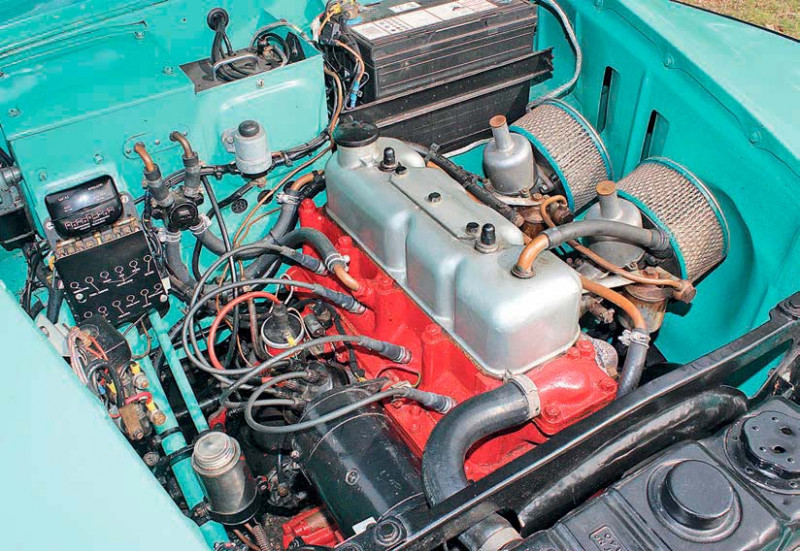
The engine came from the A70 Hampshire, but was stretched from 2199cc to 2660cc, boosting power from 67bhp to 88bhp for a top speed of96mph. This engine was to prove more successful than the Atlantic itself, and went on to power the Austin-Healey 100 from 1954-1956.
An Austin Atlantic is just as glamorous on the inside as it is on the outside. Naturally there is a column gear change, along with glorious white period detailing.
The electro-hydraulic system for roof and windows was restored.
Austin in Melbourne could not identify the colour, as it was not on any production lists they had access to


